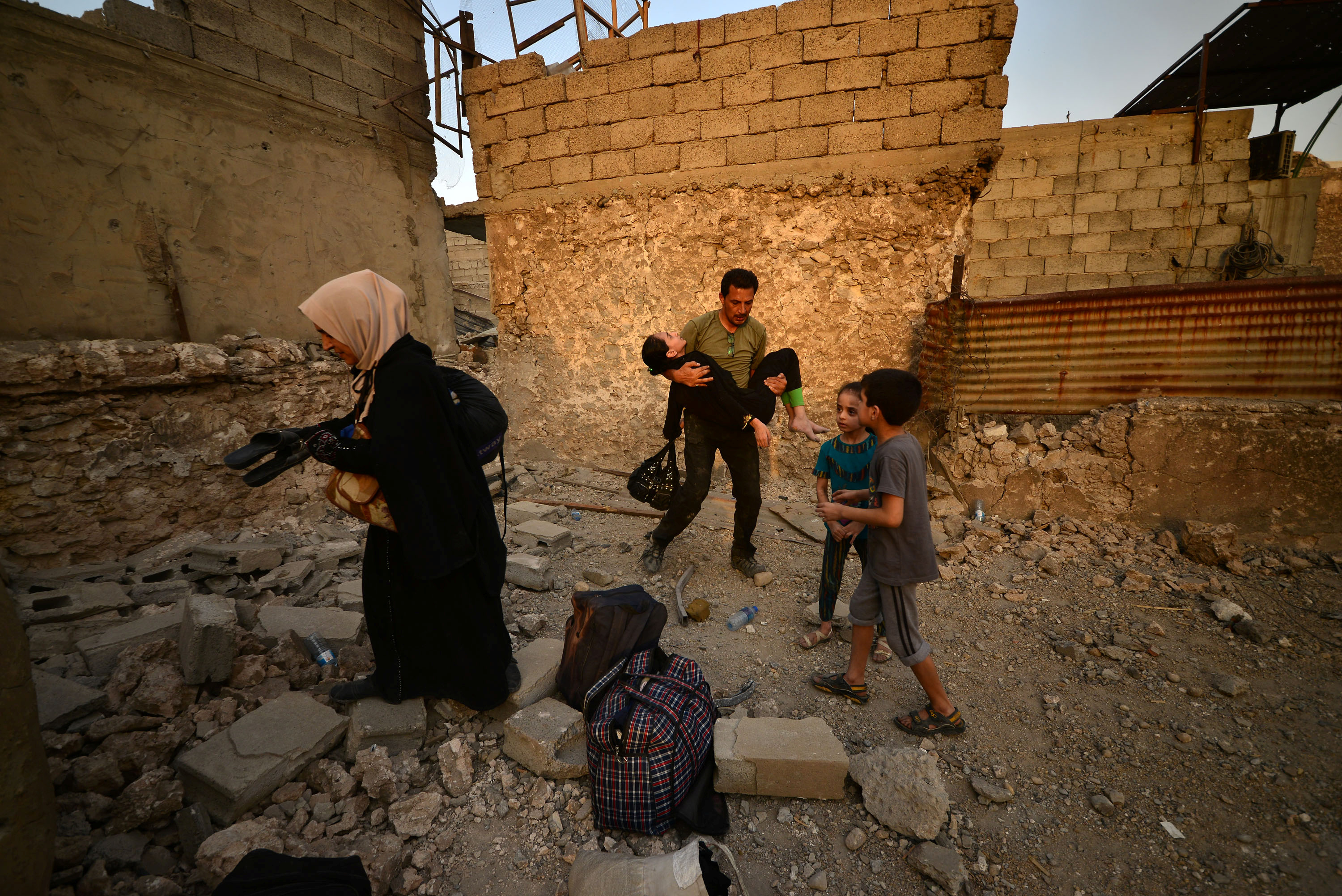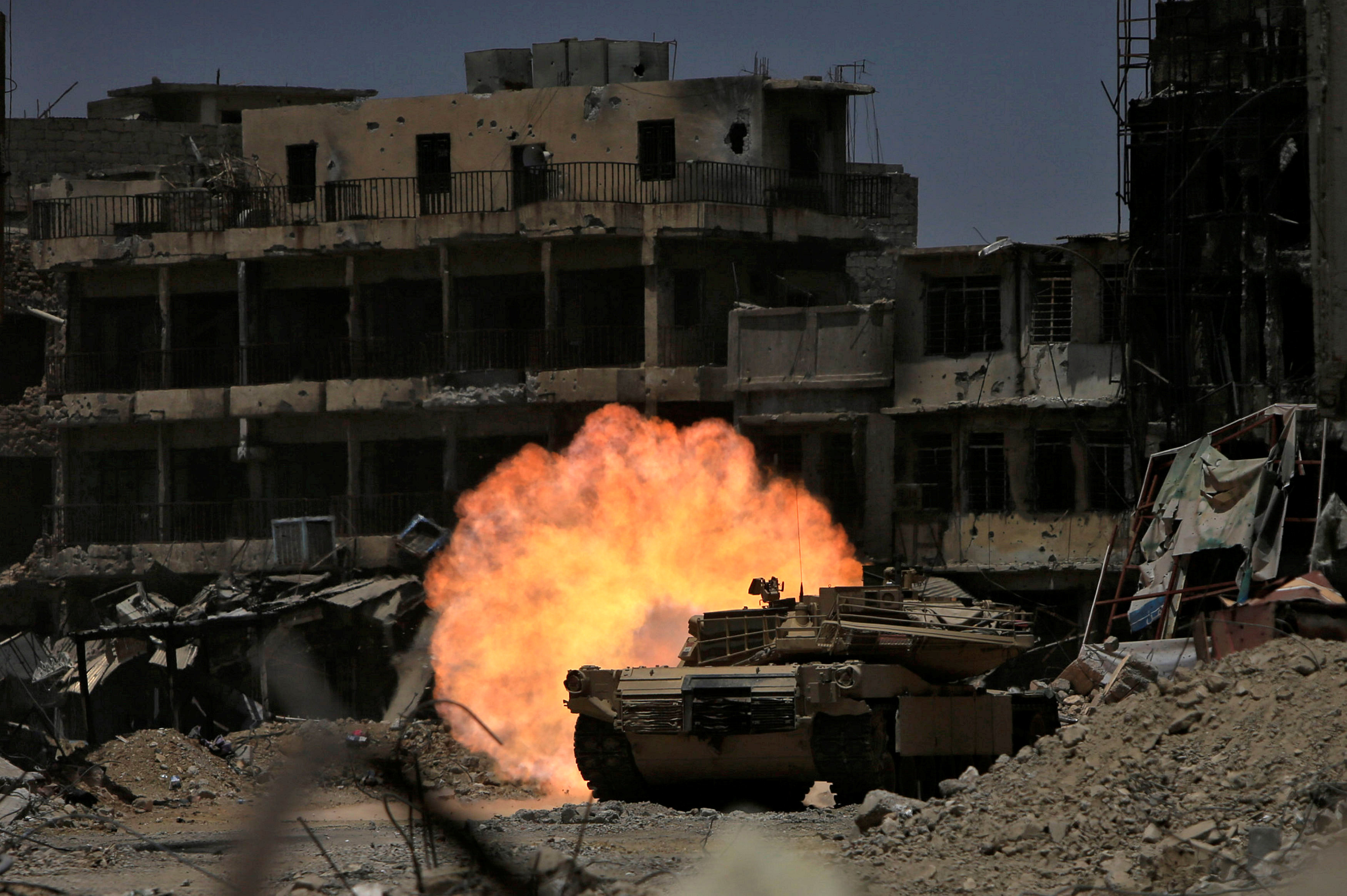
MOSUL/TIKRIT, Iraq (Reuters) – Islamic State militants attacked a village south of Mosul, killing several people including two journalists, even as they were about to lose their last redoubt in the city to an Iraqi military onslaught, security sources said on Friday.
The assault on Imam Gharbi village appeared to be the sort of diversionary, guerrilla-style strike tactics Islamic State is expected to focus on as U.S.-backed Iraqi forces regain control over cities IS captured in a shock 2014 offensive.
Security sources said IS insurgents had infiltrated Imam Gharbi, some 70 km (44 miles) south of Mosul on the western bank of the Tigris river, on Wednesday evening from a pocket of territory still under their control on the eastern bank.
Two Iraqi journalists were reported killed and two others wounded as they covered the security forces’ counter-attack to take back the village on Friday. An unknown number of civilians and military were also killed or wounded in the clashes.
In Mosul, IS clung to a slowly shrinking pocket on the Tigris west bank, battling for every meter with snipers, grenades and suicide bombers, forcing security forces to fight house-to-house in densely-populated blocks.
The Iraqi military has forecast final victory this week in what used to be the de facto capital of IS’s “caliphate” in Iraq, after a grinding eight-month, U.S.-backed offensive to wrest back the city, whose pre-war population was 2 million.
But security forces faced ferocious resistance from roughly several hundred militants hunkered down among thousands of civilians in the maze of alleyways in Mosul’s Old City.
Air strikes and artillery salvoes continued to pound Islamic State’s last Mosul bastion on Friday, a Reuters TV crew said.
Mosul was by far the largest city seized by Islamic State in its offensive three years ago where the ultra-hardline group declared its “caliphate” over adjoining parts of Iraq and Syria.
ASYMMETRIC ATTACKS
Stripped of Mosul, IS’s dominion in Iraq will be reduced to mainly rural, desert areas west and south of the city where tens of thousands of people live, and the militants are expected to keep up asymmetric attacks on selected targets across Iraq.
Adhel Abu Ragheef, a Baghdad-based expert on jihadist groups, said Islamic State was likely to carry out “more of these raid-type attacks on security forces to try to divert them away from the main battle”, now in Mosul and then in other areas west of Mosul including near the Syrian border still IS control.
Prime Minister Haider al-Abadi declared the end of Islamic State’s “state of falsehood” a week ago, after security forces took Mosul’s mediaeval Grand al-Nuri mosque – although only after retreating militants blew it up.
Months of grinding urban warfare in Mosul have displaced 900,000 people, about half the city’s pre-war population, and killed thousands, according to aid organizations.
The United Nations predicts it will cost more than $1 billion to repair basic infrastructure in Mosul. Iraq’s regional Kurdish leader said on Thursday in a Reuters interview that the Baghdad central government had failed to prepare a post-battle political, security and governance plan.
The offensive has damaged thousands of structures in Mosul’s Old City and destroyed nearly 500 buildings, satellite imagery released by the United Nations on Thursday showed.
In some of the worst affected areas, almost no buildings appear to have escaped damage, and Mosul’s dense construction means the extent of the devastation might be underestimated, U.N. officials said.
(Writing by Maher Chmaytelli; editing by Mark Heinrich)










